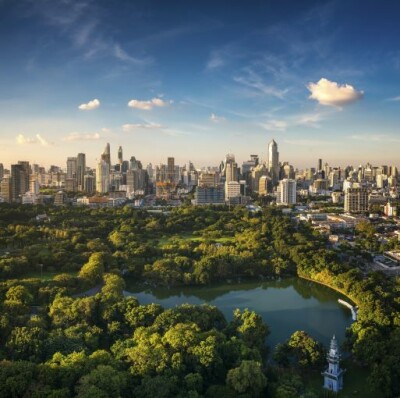Whether we’re talking about a company, a local government, a federal government, or most any other organization out there, climate change and sustainability goals are top of mind. Due to regulations being passed around the world, to say nothing of the moral imperative, all types of entities are looking for any reasonable methodology available to reduce their carbon footprint and other negative climate effects. Looking at a building level, we know that things like BIM and digital twins can make a positive impact, but what about larger-scale concerns? SIRADEL is aiming to address that market. Leveraging their expertise in combining digital twin and smart city technologies, the French company this month officially announced their new Urban Climate Resilience Toolkit.
The toolkit, which is designed specifically for those larger scale entities like cities and territories, takes the types of tools SIRADEL has long offered, along with their experience in helping these entities make their digital transitions in other areas, and applies them specifically to climate concerns. One of the reasons cities are increasingly willing to go through the complex process of building out a smart city is because of these sustainability goals, and this new toolkit, based around visualization and simulation tools, is aiming to be a go-to source as localities begin and continue their journey.
As the company puts it in their official announcement of the toolkit, “With this new tool, SIRADEL, aware of the urgency we must face collectively, puts its experience at the service of the building of a more resilient world in environmental and climatic terms, where biodiversity, human well-being and urban infrastructures are all protected and enriched.”
In that official announcement, SIRADEL also calls out a “triple diagnosis” as being the basis on which the platform, which is composed of three customizable solutions, is built. That three-pronged strategy identifies, in their mind, the three key ingredients needed to develop the best solutions and action plans for each individual city and territory. First is an accounting of vegetation, heat islands of heat or coolness, and the index of vulnerability to heat waves. From there, a determination is made of the areas which need to be prioritized for revegetation and dewatering, while calculating the impacts on both the surrounding environment as well as quality of life for residents. And finally, simulations are run based on the available data to measure the impact of various developments and initiatives, taking into consideration the latest warming hypotheses.

It remains to be seen how intuitive this toolkit is and how technologically-advanced a user must be to fully harness the value – SIRADEL’s announcement indicates the solution is “already deployed in several cities” – but on the surface it appears to meet the key needs cities need to meet their sustainability goals. At this point those charged with improving an area’s impact on the environment know most of the things to look for, but it’s hard to get accessible tools which present all of that information. This Urban Climate Resilience Toolkit does just that, finding the key pieces of information on which decisions can be based. The ability to then run simulations informed by that data means trial and error won’t have to be the relied upon tool, hopefully speeding up the process for putting actionable and impactful solutions in place.
SIRADEL as a company is one that is uniquely positioned to provide this kind of value given their history and other products. Founded nearly 30 years ago, the company indicates that they’ve worked specifically in supporting cities and territories in their environmental and digital transformations for over a decade, and they specialize in these kinds of tools. Specifically, SIRADEL’s main offerings are around digital twins and 3D models, along with smart city applications. Each of those areas are leveraged for this new toolkit, and they also have the added benefit of experience in implementing new technology at a city or territory level, which is half the battle for making something like this work.
On these new solutions, Christophe Papin, SIRADEL’s Smart Solutions Director, said in a prepared press statement, “These solutions have been developed to help stakeholders in charge of land development, but also landowners or real estate asset managers to make their assets more resilient to climate change. They are easily customizable to take into account the characteristics of each territory and the associated needs.”






